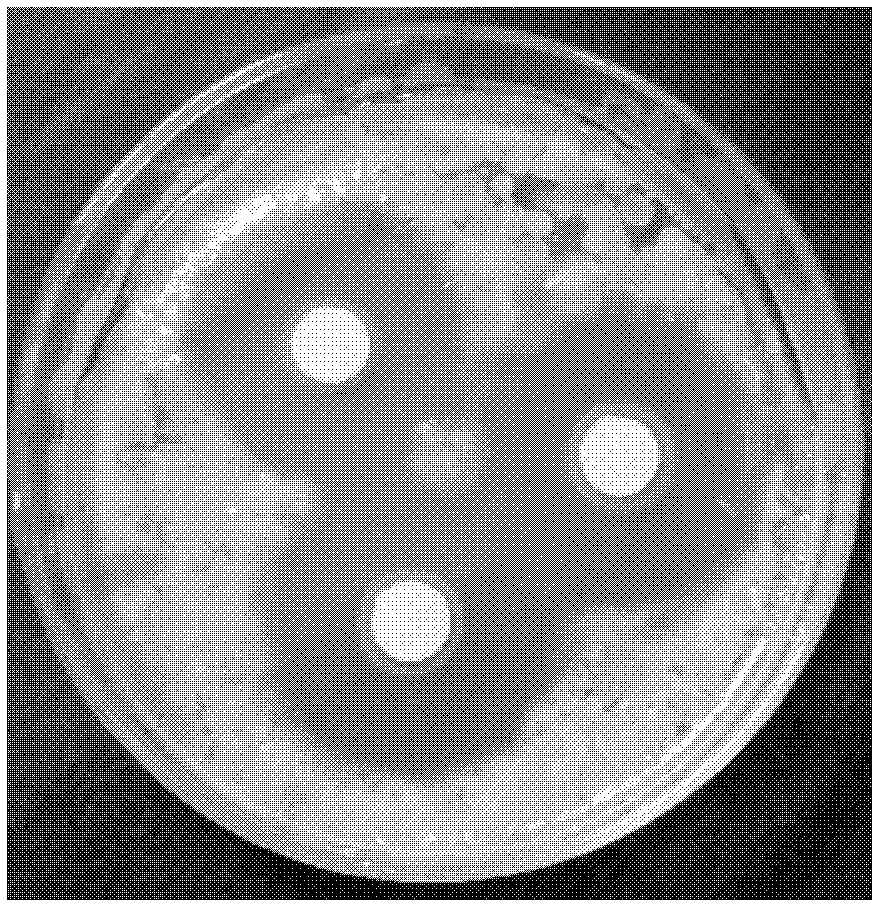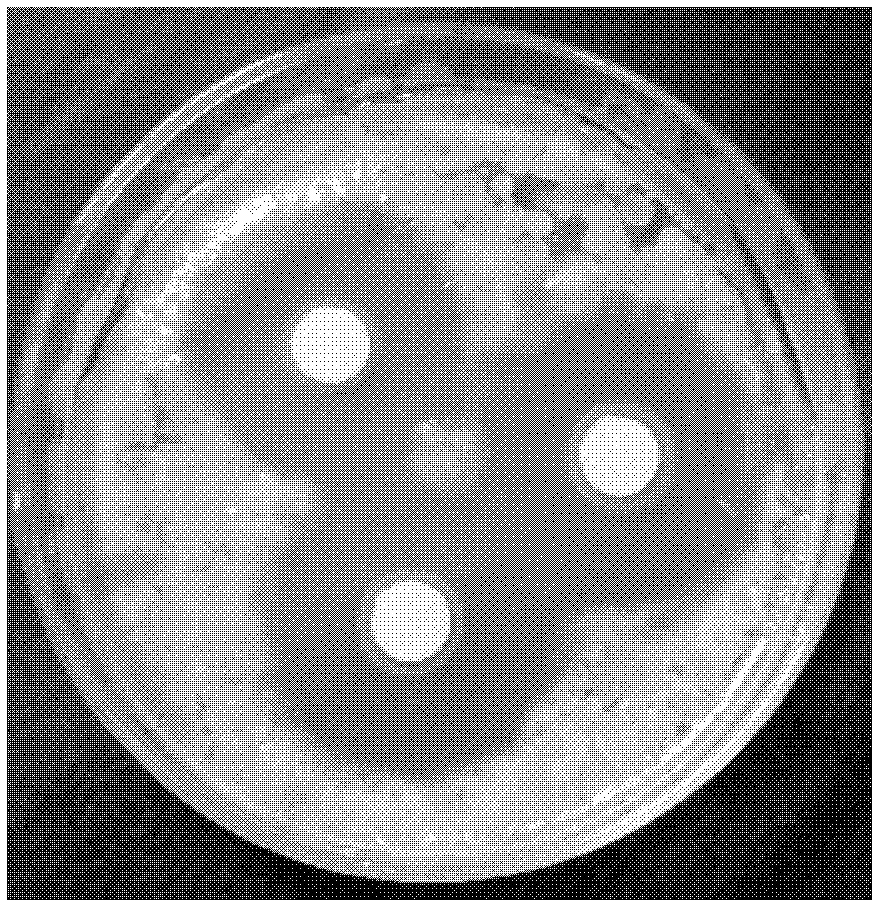Method for preparing tea saponin/copper compound antibacterial agent
A compound antibacterial agent and tea saponin technology, applied in the biochemical field of renewable resources, can solve the problems of drug resistance, antibacterial delayed effect, high price, etc., and achieve no drug resistance reaction conditions, easy operation, and low price cheap effect
- Summary
- Abstract
- Description
- Claims
- Application Information
AI Technical Summary
Problems solved by technology
Method used
Image
Examples
Embodiment 1
[0019] The tea saponin that 100g purity is 85% is dissolved in distilled water, forms the tea saponin solution that mass concentration is 10%, adds 55g cupric chloride solid under the condition of stirring, after stirring it to dissolve, continue to stir 3 hours, Then dry by a spray drier to obtain a powdered tea saponin / copper composite antibacterial agent.
[0020] The tea saponin / copper composite antibacterial agent prepared in this example was compared with a single tea saponin (comparative example 1) and copper chloride (comparative example 2). The test results are shown in Table 1.
[0021] Table 1 Minimum Inhibitory Concentration Unit: mg / ml
[0022] microorganism Comparative example 1 Comparative example 2 This example Escherichia coli ATCC29252 6 15.5 0.5 Staphylococcus aureus 15 17.5 0.75 Salmonella enterica 6 18 1
Embodiment 2
[0024] 100g of tea saponin with a purity of 72% is dissolved in distilled water to form a mass concentration of 10% tea saponin solution, add 100g of copper sulfate solid, 35g of cupric chloride solid and 30g of copper nitrate solid under stirring, and stir After making it dissolve, continue to stir for 3 hours, then dry by a spray drier to obtain a powdered tea saponin / copper composite antibacterial agent.
[0025] The tea saponin / copper composite antibacterial agent prepared in this example was compared with a single tea saponin (comparative example 1) and copper chloride (comparative example 2). The test results are shown in Table 2.
[0026] Table 2 Minimum inhibitory concentration unit: mg / ml
[0027] microorganism Comparative example 1 Comparative example 2 This example Escherichia coli ATCC29252 6 15.5 1 Staphylococcus aureus 15 17.5 0.75 Salmonella enterica 6 18 1.5
Embodiment 3
[0029] 100g purity is that the tea saponin of 90% is dissolved in distilled water, forms the tea saponin solution that mass concentration is 10%, adds 70g cupric chloride solid and 30g cupric nitrate solid under the condition of stirring, after stirring it to dissolve, Continue to stir for 4 hours, then dry by a spray dryer to obtain powdered tea saponin / copper composite antibacterial agent.
[0030] The tea saponin / copper composite antibacterial agent prepared in this example was compared with a single tea saponin (comparative example 1) and copper chloride (comparative example 2). The test results are shown in Table 3.
[0031] Table 3 Minimum Inhibitory Concentration Unit: mg / ml
[0032] microorganism Comparative example 1 Comparative example 2 This example Escherichia coli ATCC29252 6 15.5 0.5 Staphylococcus aureus 15 17.5 0.75 Salmonella enterica 6 18 1
PUM
 Login to View More
Login to View More Abstract
Description
Claims
Application Information
 Login to View More
Login to View More - R&D
- Intellectual Property
- Life Sciences
- Materials
- Tech Scout
- Unparalleled Data Quality
- Higher Quality Content
- 60% Fewer Hallucinations
Browse by: Latest US Patents, China's latest patents, Technical Efficacy Thesaurus, Application Domain, Technology Topic, Popular Technical Reports.
© 2025 PatSnap. All rights reserved.Legal|Privacy policy|Modern Slavery Act Transparency Statement|Sitemap|About US| Contact US: help@patsnap.com


